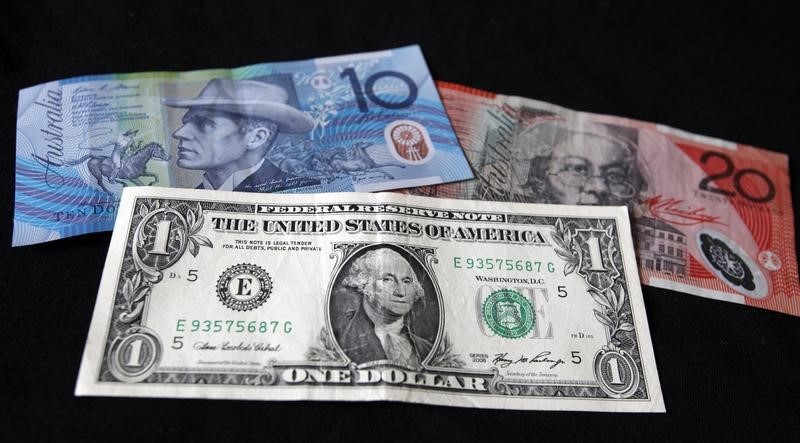Investing.com - The Aussie traded retraced earlier weakness on Tuesday despite disappointing trade and building approvals data and the yen weakened on finance minister comments.
AUD/USD traded at 0.7537, down 0.01%, while USD/JPY changed hands at 102.67, up 0.24% after Japanese Finance Minister Taro Aso said exchange rates were showing "extremely nervous moves" and that he was closely watching currency movements. In addition,Prime Minister Shinzo Abe's government was slated to approve ¥13.5 trillion ($132 billion) in fiscal stimulus to boost the economy and prices.
In Australia, building approvals for June fell 2.9%, compared with a 0.5% gain seen month-on-month and the trade balance widened to a deficit of A$3.195 billion from an expected deficit of A$2 billion and a previous month figure of A$2.418 billion.
Later, New Zealand releases inflation expectations for the second quarter with the previous igure 1.6% quarter-on-quarter. NZD/USD traded at 0.7172, flat.
The U.S. dollar index, which measures the greenback’s strength against a trade-weighted basket of six major currencies, rose 0.01% to 95.76.
Overnight, the dollar held onto gains against the other major currencies on Monday, even after data showed that manufacturing activity in the U.S. fell more than expected in July, but the greenback still remained within close distance of a five-week trough.
The Institute for Supply Management said its index of manufacturing activity dropped to 52.6 last month from June’s 53.2. Analysts had expected the index to tick down to 53.0 in July.
The dollar recovered from sharp losses posted after the Bank of Japan approved only moderate stimulus measures at Friday monetary policy meeting, disappointing markets which were hoping for much more aggressive easing.
While the BoJ eased its monetary policy further by increasing its purchases of exchange-traded funds, it opted not to cut interest rates deeper into negative territory or increase the monetary base, as analysts had widely expected.
But sentiment on the greenback remained fragile after the advance read on second quarter U.S. gross domestic product showed on Friday a 1.2% annualized growth rate, well below expectations for 2.6%. First quarter GDP was revised lower to 0.8% from 1.1%.
The disappointing data lessened expectations for an early interest rate rise from the Federal Reserve.
